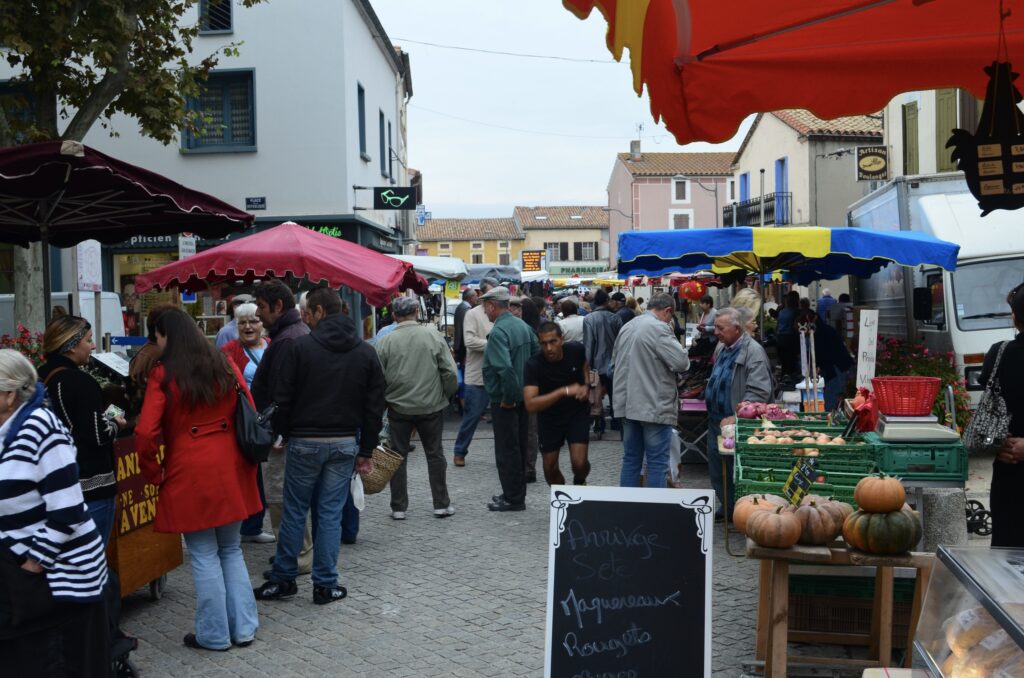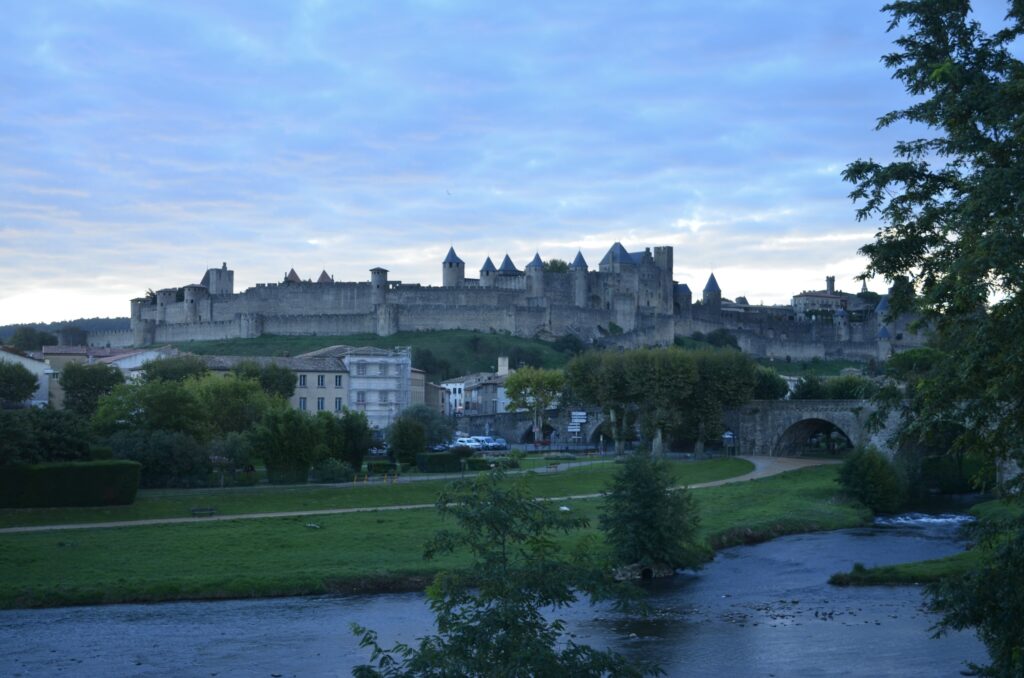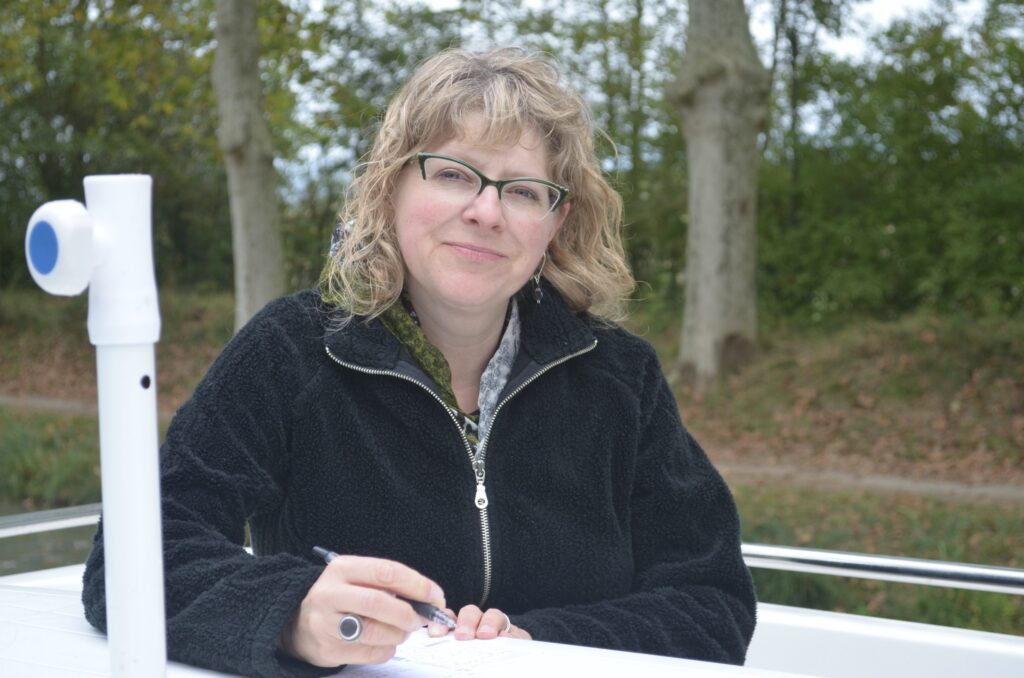

When we started down the canal the next day we had to become familiar with going through the locks and maneuvering the boat, we all ended up with a job that quickly became familiar. Entering a lock everybody had a task, I usually drove the boat, Mom, Dad and Lori took turns working the mooring lines on the bow and stern, while the free crew member orchestrated and took photos when able. The first trips into locks were less than stellar until everybody got the hang of it, not to mention me actually learning to make the boat do what we wanted it to when it was necessary. Fortunately we weren’t the first to have problems with the maneuvers. All of the locks on the Canal du Midi have lock keepers to operate the locks and they are used to tourists who don’t know how to operate their boats. When we did something wrong as we entered a lock you would hear a litany of rapid French interspersed with a few English words giving directions.

On the Canal du Midi each of the locks have a lock keepers house next to it to house the lock keepers. They are simple 2 story houses, all similar except for the unique character each lock keeper brings to them. Some adorned with flower boxes, some sold wine and jams or baked goods on the side. One in particular was inhabited by an artist and the grounds around the locks were covered with sculptures.

Many aspects of the canal travel were as expected. We meandered through the countryside littered with farms and vineyards, passed by occasional chateaus and regularly went through small villages and towns that lined the canal. Even the smallest of these villages had some sort of provisions even if it was just a small store with only the most basic of supplies. Many villages had a bakery and a restaurant, some had a butcher and a wine cave that produced the local cooperative’s wine. Almost all had old churches at their center and many were built around a now decomposing chateau.

Stopping to visit a town or for a rest simply involved pulling the boat to the side of the canal. Most villages have developed moorings to make it easy to stop, but if they didn’t or we were outside of a village we simply staked the boat to the shore. Once secured we could cook, eat and explore, or just enjoy the day in the sun.
We had everything we needed on the boat, including the basic supplies we had picked up. Our clothes were stowed in drawers, our galley was equipped well enough that we could cook when and as we liked. Our time was optimized to do what we liked, instead of spending hours each day packing and moving to the next set of sights. The only obligation we had was to arrive at our final destination by the end of the trip.

Options to resupply as we traveled were common, but one of the most interesting were the farmers markets. The markets move from village to village on a schedule throughout the week. The canal guide we used noted the market days for the villages so we could plan our visits to take advantage of them. The markets start setting up about 7:00 in the morning and are usually closing around noon. On market day a normally quiet village comes alive with activity. Booths take over a street or village square to supply a seasonal array of fruits, vegetables, meats, fish, cheese and bread along with street food vendors and some dry goods merchants.
The one large city we passed through was Carcassonne, a city that grew outside of the associated fortified city Cité de Carcassonne. The city has a port facility with electric and water that we hooked up to and stayed for a couple of days at a cost of 12 Euros per day. It is the largest city in the area and has a thriving city center, with characteristic narrow winding streets and shops.

The Cité de Carcassonne, now a World Heritage site, was started by the Romans in about 100 AD. Between the founding of the Cité and about 1650 the fortifications were expanded to the current configuration. It fell into disuse after the Treaty of the Pyrenees in 1659 and in 1849 the French government moved to have it demolished, but due to local pressure it was preserved as a historical monument. While some of the restoration isn’t historically accurate, it is the only fully intact fortified city left. It is still inhabited and functions as an entity of its own with shops, a school and a Cathedral.
Travel down the canal helped establish a routine that was relaxing and rooted in the familiar. Up in the morning for coffee then a quick walk or bike ride to the local bakery for bread for the day, followed by breakfast. If it was market day in a village nearby a visit was in order for fresh food supplies, not to mention the atmosphere. When we had seen all we wanted, we got underway. While underway we also had a routine, chores to be completed, washing dishes, taking showers, drawing, reading and planning for a future stop.

Our pace of life changed. The French don’t work over lunch. Locks closed at noon, well actually before noon. It takes about 15 minutes for a lock to cycle, if that was going to impinge on lunch time the lock closed. Stores and shops in the smaller villages closed for lunch too, with the exception of cafes. When we were in a village we could eat in a restaurant or we could park on the side of the canal eat a leisurely lunch, like the French, and relax while the locks were closed.
*****
This is the end of the Fifth installment in the ongoing series that details our introduction to river cruising on the European waterways and to our purchase and outfitting of our own boat to for travel and living in Europe. If you are interested in being notified of future installment releases, Subscribe to this series in the sidebar on the right.
If you missed the Previous installments they can be found under the category “A New Adventure-Series”



Very interesting. Keep it up.